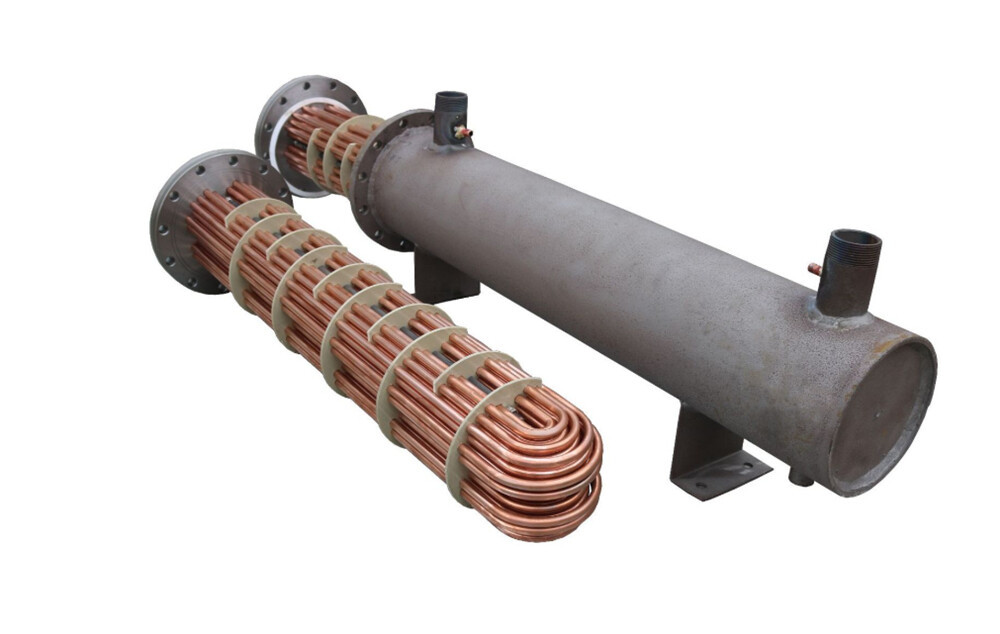Refrigerant in the evaporator is in a low-temperature, low-pressure state, heat transfer to the refrigerant in the thermal tank, so that the refrigerant from the liquid state into a gaseous state, the process of the refrigerant to absorb a large amount of heat, thereby reducing the temperature in the thermal tank, to achieve the effect of refrigeration. The gaseous refrigerant is then sucked out by the compressor and enters the next part of the refrigeration cycle.
Shell and tube evaporator consists of shell, tube bundle, tube plate, etc. The refrigerant flows in the tube, and the medium in the heat tank flows in the shell program, and the heat is exchanged through the tube wall. This kind of evaporator has compact structure and high heat exchange efficiency, which is suitable for large-scale heat tank refrigeration system.
Structural components
Heat exchanger tube: usually copper or aluminum tube with good thermal conductivity, the refrigerant flows inside the tube and exchanges heat with the medium in the heat tank outside the tube.
Fin: Installed on the heat exchanger tube, used to increase the heat exchange area and improve the heat exchange efficiency. The fins are generally made of aluminum, and their shapes and spacing are designed according to different application scenarios and requirements.
Shell: used to protect the internal heat exchanger tube and fins, usually made of metal materials, with a certain degree of strength and sealing to prevent refrigerant leakage.
Refrigerant inlet and outlet: used for refrigerant inflow and outflow respectively, connected with other parts of the refrigeration system to form a complete refrigeration cycle circuit.
Temperature sensing elements: such as temperature sensors, used to monitor the temperature and pressure of the refrigerant in the evaporator and other parameters, and transmit the signals to the control system for precise control of the refrigeration process.
Role
Realization of refrigeration: it is the key component in the refrigeration system of the thermal tank, through the evaporation and heat absorption of the refrigerant, it reduces the temperature inside the thermal tank and meets the requirements of the process or the stored goods for the low-temperature environment.
Temperature control: cooperating with the control system of the refrigeration system, it automatically adjusts the flow rate of refrigerant and evaporation temperature according to the temperature change inside the thermal tank, so as to keep the temperature inside the thermal tank within the set range.
Improve refrigeration efficiency: Reasonable design and selection of the evaporator can improve the heat exchange efficiency between the refrigerant and the medium in the heat tank, reduce the energy consumption of the refrigeration system and lower the operating cost.


